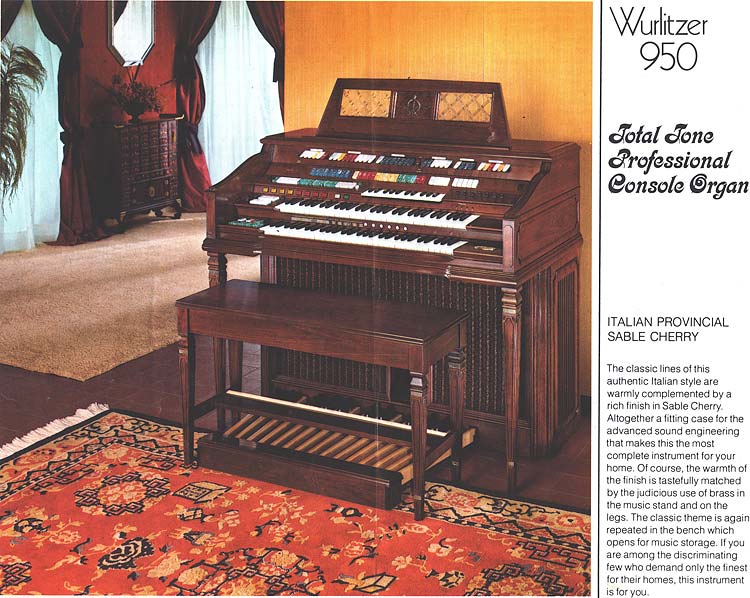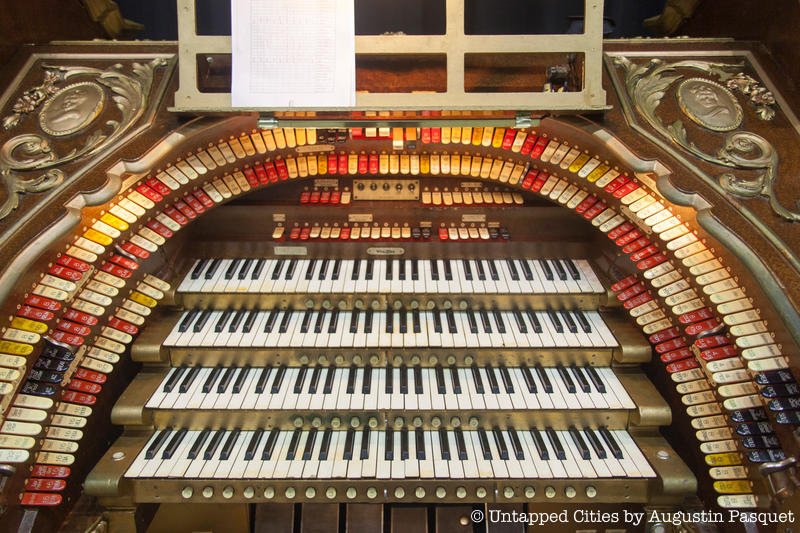

- Wurlitzer organ models list generator#
- Wurlitzer organ models list manual#
- Wurlitzer organ models list code#
For example, a perfectly original Style D Wurlitzer would be as important a member of this class as a four manual Fox Special. In this classification, equal importance is given to instruments regardless of age, size, builder, or any other special characteristic provided they meet the above qualifications. Re-regulation of pipework, but only in order to correct problems which have occurred subsequent to the original installation.
 Re-framing and replacement of wind conductors if done to original standards in the case of a relocated organ.
Re-framing and replacement of wind conductors if done to original standards in the case of a relocated organ. Wurlitzer organ models list code#
Replacement of electrical cabling if required by National Electrical Code in the case of a relocated instrument.
Wurlitzer organ models list generator#
Replacement of generator with rectifier. Replacement of perishable parts with original type materials or appropriate substitute materials of originals are not available. The only alterations from original condition which are allowed are: Instruments in original locations, original instruments moved to acoustically compatible new locations, instruments restored faithfully to their original condition, and instruments newly built orĪssembled from parts which follow exactly all details of a theatre organ as built by a theatre organ manufacturer prior to World War II. HERITAGE INSTRUMENTS: Heritage instruments are those which present to us a faithful picture of what the theatre organ was like in its golden age. In order to be included in any one of the three following ATOS award categories, the instrument and its restoration process must qualify under the ATOS general guidelines for theatre organĭescriptions of each of the three historic categories of theatre organs follows (along with the additional special qualifications required for each category): These nominations would be publicized in Theatre Organ journal and awards would be presented at the annual convention, being accorded the same status as "Hall of Fame," "Member of The Year," etc.Īnother function of the committee would be to handle complaints against individuals or groups actively violating the purposes of the Guidelines, and to make a list of bona fide restorers or consultants. A blue-ribbon committee would then nominate instruments for plaques or certificates recognizing their status. We recommend establishing categories for theatre organs (much like those for automobiles such as Classic, Antique, etc.). However, the ATOS can encourage good work by recognizing it! By setting standards and then making highly publicized awards to instruments and their owners who meet these standards, ATOS can prevent the destruction of the few remaining original theatre organs and encourage high-quality work on theatre organs built or assembled for today's musical needs. There is no way that the ATOS can prevent bad practices in theatre organ restoration and maintenance. STRATEGIES FOR THEATRE ORGAN PRESERVATION 
It is not too late to establish the kind of standards which will increase the value of theatre organs. This is because there is no standard of quality and desirability in the theatre organ hobby. People have made huge investments in the theatre organ hobby only to find a limited market when time comes to sell an instrument. Because the theatre organ, unlike the church organ, was built on a definite system of design even to the point of standardized models, there is no reason the theatre organ cannot gain the same "collectible" status as classic cars, orchestrions, music boxes, phonographs, etc. Theatre organs by the hundreds have been lost forever through carelessness, thoughtless alteration and enlargement, as well as negligent storage, rebuilding and maintenance sometimes at the hand of ATOS members and in the name of "preservation" or "restoration." Several societies exist worldwide to encourage reservation of church organs and it is past time for the ATOS to sponsor a similar activity for theatre organs.Īside from the pure academic and nostalgic reasons for preserving examples of the craft of theatre organ building, there is a strong economic reason. It is a sad paradox that we have fewer as-built, original theatre organs from the 20th century than church organs from the 18th and 19th centuries! This is astounding when you consider the number of theatre organs produced in the instrument's golden age just over a half-century ago.







 0 kommentar(er)
0 kommentar(er)
